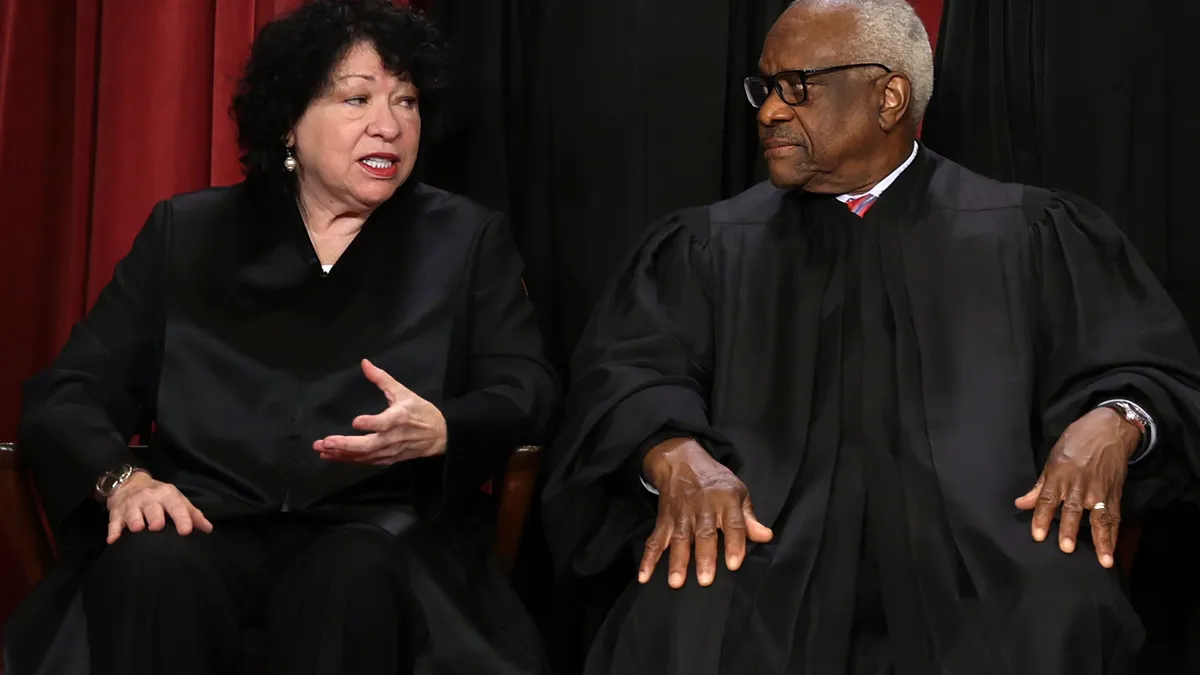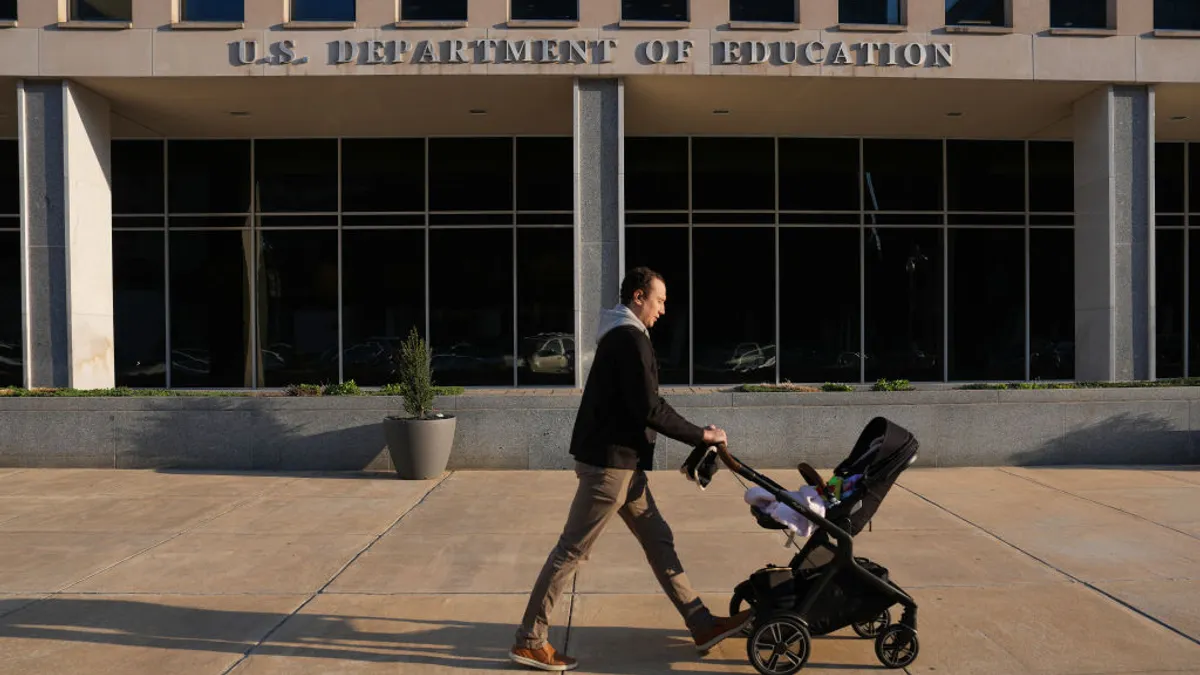A student disability case that could expose schools to increased financial liability for free-and-appropriate-education violations took an unexpected turn during oral arguments at the U.S. Supreme Court on Monday morning, as justices and attorneys found themselves at odds over the school district's position.
Arguments in the case, A.J.T. v. Osseo Area Schools, began with a question of whether K-12 students with disabilities have to meet a higher legal bar than other Americans to win damages for violations under Title II of the American Disabilities Act or Section 504 of the Rehabilitation Act.
Section 504 and ADA apply to all Americans, including students, in federally funded programs and public settings, respectively, and both statutes provide monetary relief for violations. This is in contrast to the Individuals with Disabilities Education Act, which applies only to education settings and does not allow financial damages.
The Supreme Court, in its own summary of the case, said it would decide this: "Whether the ADA and Rehabilitation Act require children with disabilities to satisfy a uniquely stringent 'bad faith or gross misjudgment' standard when seeking relief for discrimination relating to their education."
"This case started narrow," said Roman Martinez, attorney for parents of the special education student from Minnesota who brought the case, in Mondays' oral arguments. "It's now quite broad because of the arguments the district is making."
How the case started
Osseo Area Schools in Minnesota was originally sued by Martinez's client, referred to in court documents as "Ava," a teenage girl with severe epilepsy. Ava sued the district in 2018, seeking monetary relief under ADA Title II and Section 504, in addition to the services she received after winning an IDEA claim.
The 8th U.S. Circuit Court of Appeals, in 2024 rejected Ava's Title II and Section 504 claims, citing its own 1982 decision in Monahan v. Nebraska that required students like Ava to show the school acted in "bad faith or gross misjudgment."
This standard currently applies to the 8th Circuit, as well as four other circuits that follow the higher standard rather than the "deliberate indifference" standard that applies to schools elsewhere. The higher standard impacts 46,000 schools and 8 million children covered by IDEA, with some 30,000 complaints currently pending, according to Blatt.
This higher bar was to recognize that discrimination claims based on a district's development of an individualized education plan for a child are not typical discrimination claims, according to Sonja Trainor, executive director of the National School Attorneys Association. NSAA, as well as AASA, The School Superintendents Association, and other education organizations, filed a friend-of-the court brief in support of Osseo Area Schools.
Trainor said she is concerned the justices may rule against the district and keep a lower "deliberate indifference" standard rather than the higher "bad faith or gross misjudgment" standard — changing the standard for schools that fall under the 8th Circuit and four other appellate circuits and setting a nationwide "deliberate indifference" standard.
"It could create an atmosphere where there will probably be more litigation, because there will be an easier standard to meet" in those circuits, said Trainor. "So I think that there would be some expansion of liability."
Justices skeptical of district arguments
Ava's family challenged the 8th Circuit's decision, saying in their September petition to the Supreme Court that the "atextual rule imposed in five circuits makes it far harder for them to prove their claims — for no good reason."
"That has real consequences: Literally hundreds of decisions have relied on Monahan (or its equivalent in other circuits) to deny relief to children like Ava," the plaintiffs wrote.
Osseo Area Schools originally said in its Dec. 18 response to the Supreme Court that the 8th Circuit's higher standard preventing districts from increased liability was "both consistent with the ADA and the Rehabilitation Act, and appropriate in the education context." The Supreme Court accepted the case in January.
During arguments on Monday, however, Lisa Blatt, attorney for Osseo Area Schools, argued that rather than applying to a select subset of cases in education settings, the higher standard should be applied nationally to all Americans seeking financial relief under discrimination statutes — even in settings outside of education and beyond disability cases.
"You're in charge, so you can say: 'Intent to discriminate' is the standard. We're not going to use 'bad faith,'" said Blatt. "Basically, it's the same standard in the race context or in the sex context."
Justices seemed surprised by Blatt's arguments. "You are basically saying, 'No, I'm not asking for a unique rule; I'm asking for a rule that applies to all discrimination statutes,'" said Justice Sonia Sotomayor. "It would have been nice to know that we were biting off that big a chunk."
Justice Elena Kagan considered whether the district's arguments on Monday violated the Supreme Court's own administrative rules, which require respondents to address such disagreements over law or fact prior to oral arguments.
Other justices also seemed taken aback by the district's arguments, during which Blatt accused U.S. Assistant to the Solicitor General Nicole F. Reaves — who joined oral arguments — and Martinez of lying when characterizing the district's alleged change in arguments.
"I confess, I'm still troubled by your suggestion that your friends on the other side have lied," said Justice Neil Gorsuch. "People make mistakes."
Blatt ultimately withdrew her statement accusing the Department of Justice and Martinez of lying.
Monday's case adds to other K-12 disability cases taken up by the high court in recent years.
Justices unanimously decided in 2023 in Perez v. Sturgis Public Schools that students who have agreed to IDEA settlements can also pursue monetary damages against school districts under ADA without exhausting the administrative process under IDEA. That ruling reversed a decision from the 6th U.S. Circuit Court of Appeals.
In 2017, justices decided in a similar case, Fry v. Napoleon Community Schools, that families don't need to exhaust IDEA if their claim falls mainly under ADA.








 Dive Awards
Dive Awards














